Jennings: Interactive Case Study: Email Performance, Lists and Staffing
When I was in graduate school, we did a lot of case study learning – and I loved it! Now that I’m an adjunct professor (Hoya Saxa!) I use case studies with my students. And when Bill asked me to lead a discussion on Only Influencers, I thought it might be fun to do a case study with the group. So here’s the deal…
I’ve written the simple case study below just for Only Influencers. The details are compiled from actual experiences with my consulting clients. Read it this week and make some notes – next week, when I am moderating the Only Influencers list, will be your chance to weigh in with thoughts and recommendations.
If this works as it does with my classes we should have an interesting discussion of the pros and cons of different solutions to the various issues presented in the case study. Even better – when Bill publishes the discussion, we’ll have a treasure trove of ideas to help future marketers address the challenges presented here.
One more thing to remember about case studies: there are no right or wrong answers. The key to success is to support whatever recommendations you make, either with industry information, data provided in the case study itself or things you’ve seen in your own personal experience.
And now without further ado…
Olive Street Toys (OST), a toy company in the United States, sells through third-party retailers as well as direct-to-consumers via their website. They’re a profitable company and they are contemplating the role that email marketing should play in their future.
The internal email champions see email as critical to success in their future and are advocating for email to receive a larger portion of the marketing budget. Others believe that email is past its prime and that funding should be moved from email marketing into other channels, most notably social media and programmatic. All agree that the company can’t totally walk away from email, because it keeps the brand and its products top of mind for consumers (many of whom will buy from retainers rather than direct from OST).
Another thing that both groups agree on is the lackluster performance of their email marketing program in 2018. In order for the email marketing team to maintain or expand its current level of funding, the issues need to be addressed. Three key areas of concern are:
- Email Performance
- Email List
- Email Staffing
Background
There are three key time periods for toy companies like OST: Pre-Easter, Pre-Summer and Pre-Christmas. These are the times when site traffic, email list growth, and sales peak.
OST spent the beginning of 2018 revamping its website; with much fanfare the new OliveStreetToys.com was launched in August of 2018. In reality it was more of a tweaking of the existing rather than a complete redesign.
The consulting firm they hired focused on the home page, adding a hero banner at the top, lengthening the page to showcase more products and incorporating blocks to hold third-party display advertising (an additional revenue stream for OST). They also moved some of the previously above-the-fold items to the bottom, just above the footer. This included the money-back guarantee, the ‘sign-up for email’ box and the social media links. Here’s what the email sign-up looks like today:

Email Performance
Email diagnostic metrics are below industry benchmarks and have been trending downward all through 2018.
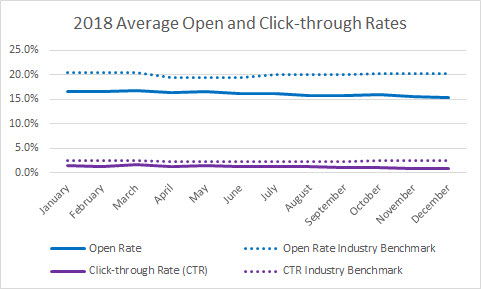
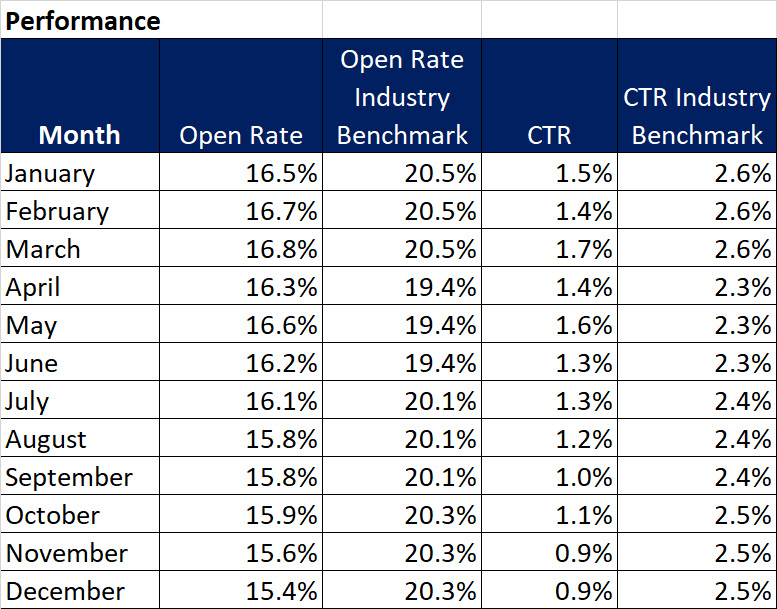
OST’s email team analyzed performance and found that roughly 30% of the list didn’t open nor click on an email in 2018; they were completely dormant. There are three schools of thought on how to handle these subscribers:
- Stop sending to them altogether
- Continue to send to them but cut back on frequency – only send during the key periods of the year (pre-Easter, pre-Summer, pre-Christmas)
- Continue to send to them at the same frequency they receive email now
OST sends a weekly email newsletter to the entire list; there are two versions of it. The first version is sent to the ‘full record’ people; the toys and games included in it are customized to match the ages of the children they buy for. The content team is very proud of this version and it takes a significant amount of time to put together. This version generates average revenue of $0.52 for each email sent.
The second version has a curated assortment of toys and games; the content team makes sure that toys and games for all the major age groups are included in each issue. This version generates average revenue of $0.58 for each email sent.
OST also sends automated email messages which are triggered by recipient behavior. So far they have invested in the following:
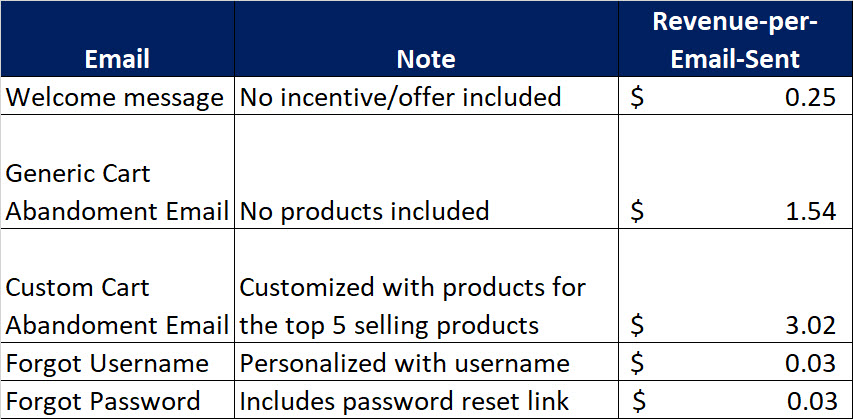
To improve performance they are considering:
- Using dynamic content to customize all their cart abandonment emails.
- Adding automated browse abandonment emails to the mix.
- Offering an automated ‘gift ideas’ email to be sent before children’s birthdays (would need to collect children’s birthdays from subscribers).
- Starting a blog that talks about parenting issues and including links to articles published there in the weekly email newsletter.
- Doubling their frequency to twice-a-week during key periods (pre-Easter, pre-Summer, pre-Christmas).
- Doubling their frequency to twice-a-week all year round.
Email List
The main source for adding new subscribers to the email list is the Website; while most people sign-up for email when they purchase online, OST is used to seeing a lot of simple sign-ups from visitors who don’t necessarily buy or who sign-up and then buy later.
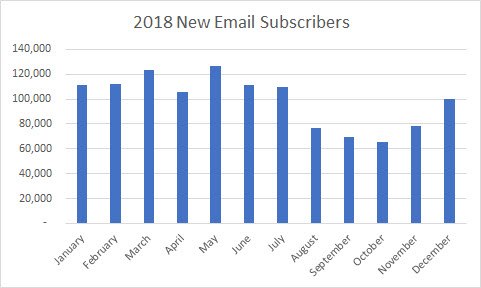
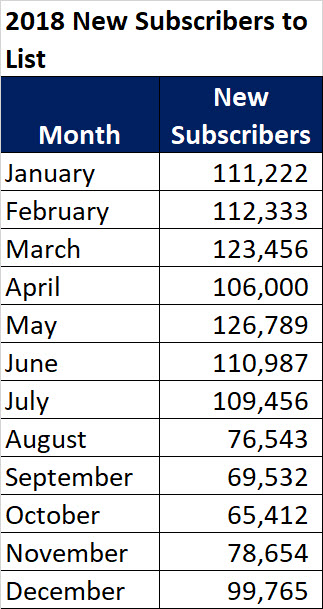
List growth has decreased in the second half of 2018 and the team at OST is concerned. The CEO sent out a call for ideas to the entire company and the executive committee is now deciding how to proceed. Here’s the short list of the tactics they are considering:
- Third-party list rental: add money to the budget to rent third-party lists on a monthly basis (twice-a-month in key time periods) for promotion.
- List append: gather all the names and postal addresses in the database that don’t have an email address and have the missing data appended to the file (this was done a few years ago and grew the list significantly, but the number of records missing an email address is now much smaller).
- Partner Share: approach retail partners and offer a swap; we’ll give them email addresses they don’t have from our house file if they give us the same number of email addresses that we don’t have from their house files.
- Incentive: offer website visitors a $5- or $10-off coupon for signing up for email.
- Children: set up a system to comply with the Children’s Online Privacy and Protection Act (COPPA) and begin asking children to sign-up for email (currently sign-ups are asked for their year of birth and emails are only collected from those who are 14 or older).
On the email list there are four types of records:
- Full records: until the August redesign, the email sign-up was two pages. The first page asked for an email address, first name and last name and year of birth; the second page asked for the birthdays of children the subscriber bought toys for. For roughly 25% of the list, OST has all this information.
- Partial records with birth year: this group is comprised of people who completed the first page of the pre-August sign-up, providing email address, first and last name and birth year. It comprises roughly 35% of the list.
- Partial without birth year: this group is roughly 30% of the list; most of these are email addresses which were appended to names in the database.
- Email-only records: this group is the balance of the list, roughly 10%. Many of these have been acquired since the August redesign, but some were on the list before that and no one quite knows where they came from. They do have birth year but no other information is included with the email address.
Email Staffing
 In the case study we reference the email team, but in reality there is only one person dedicated to email at OST. He is an email marketing specialist, and he works with the rest of the marketing team to get the email messages out. He manages the email calendar, uses the WYSIWYG to build the email messages, segments the list as needed before each send, gets all the approvals needed, quality assures each email before it is sent, hits the send button and provides performance reporting to the executive team.
In the case study we reference the email team, but in reality there is only one person dedicated to email at OST. He is an email marketing specialist, and he works with the rest of the marketing team to get the email messages out. He manages the email calendar, uses the WYSIWYG to build the email messages, segments the list as needed before each send, gets all the approvals needed, quality assures each email before it is sent, hits the send button and provides performance reporting to the executive team.
The balance of the marketing team consists of marketing managers and a Vice President; their primary expertise lies in merchandising and partnering with retailers, none of them have direct response experience. There are no copywriters, photographers, designers or coders on staff; that work is outsourced as needed. There was a director of marketing but the person left and the position hasn’t been filled.
While the email marketing specialist manages the content calendar for the newsletter, he doesn’t decide what goes in each issue. The content is dictated to him from the marketing managers and then it’s his job to search the assets database for images and product descriptions. Sometimes the managers get the information for each issue to him in a timely manner; sometimes they don’t. All of the managers who designated content for an issue have to review and approve it before it’s sent. Often there are changes in products to be featured. Sometimes managers don’t look at the email until an hour before it’s to be sent, which can cause last-minute fire drills.
The email specialist is the only one who has access to the marketing automation software, so he also handles set-up of all automated programs. The executive team has been disappointed in his performance as of late. They have read that A/B split testing is important and would like him to do more of it. They would also like to see him be more proactive about coming up with and implementing ideas to boost performance.
One member of the executive team read an article about deliverability and is concerned that OST emails may not be getting to the inbox; he asked the email marketing specialist to look into it about 2 months ago but the email marketing specialist says he’s been too busy.
The executive team is considering:
- Outsourcing the entire email function to an agency. It seems like this will solve all the issues mentioned here, but the concern is that the cost will be prohibitive
- Bringing in a consultant to assess the situation and make recommendations. Again, the cost is a concern.
- Hiring a second email marketing specialist and splitting the current job into two, perhaps with each specialist handling the weekly email every-other-week.
- Hiring a manager or director of email marketing to manage the email marketing specialist. But the concern here is that there wouldn’t be enough high-level work to keep this new hire busy.
- Decentralizing the email process and eliminating the email marketing specialist position. In this scenario, the marketing managers would take turns getting the weekly email out and split up other responsibilities.
Closing
What would you recommend that OST do with regard to email performance, lists and staffing? Which of the ideas they’re considering should they follow-through on? Are there other things they should consider?
Make your notes and prepare your case. We’ll be discussing this case study on the Only Influencers list the week of January 7th. Happy New Year!

 How to resolve AdBlock issue?
How to resolve AdBlock issue? 
